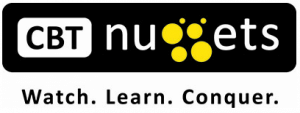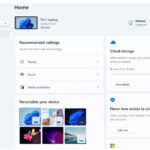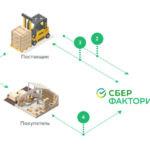Год выпуска: 2013
Производитель: CBT Nuggets
Автор: Jeremy Cioara
Продолжительность: 10:27:36
Тип раздаваемого материала: Видеоурок
Язык: Английский
Стоимость: 1999 рублей
Описание: The CCNA Voice training is for anyone who would like to begin exploring Cisco Voice over IP (VoIP) technology. Voice over IP is now the “hot topic” – it’s no longer bleeding edge. Businesses around the world are realizing the cost savings, efficiency, and just plain “coolness” of combining their telephone and data networks into one unified system. Today, it’s rare to find a company not using VoIP! That said, there is a massive shortage of qualified people who can implement and support VoIP systems.
Just like the original Cisco CCNA, CCNA Voice hits the high points of the major VoIP technologies common in Cisco voice networks. These include:
• Cisco Unified Communication Manager (CUCM – aka CallManager) • Cisco Unified Communication Manager Express (CME) • Cisco Unity Connection • Cisco Presence
So, in one series, you’re learning to work with four major products, which looks awesome on a resume!
This series goes far beyond the Cisco Certification exam. Jeremy adds extra material on the core products you deal with every day in the real-world: CUCM and CME. Of course, he carefully notes this to keep you from studying too much information if you’re preparing for the certification exam. Expect to walk away with the best of exam prep as well as real world skills!
Once someone has gone through this training, they’ll be a part of a small, select group of people who really understand VoIP technology. They’ll also be able to manage day-to-day operations of the VoIP system in small, mid-size, and large businesses. Businesses everywhere are looking for a person who can handle their basic routing & switching functions (CCNA) along with their voice network (CCNA Voice).
[wpspoiler name="Подробное описание" ]
1. Welcome to CIPT 8.0: Cisco Certification and Getting the Most from this Series (00:08:33)
Thanks for tuning in! In this Nugget, Jeremy outlines the purpose and vision for the series, discusses where CIPT 8.0 fits in the CCNP Voice certification, and goes through his recommendations for a VoIP home lab!
2. Unified Communications: What is CUCM? (00:07:29)
It's only the CORE PRODUCT of Cisco's Voice over IP (VoIP) infrastructure (yes, this might be important)! In this Nugget, Jeremy breaks down the functions of CUCM, the version history, and supported hardware.
3. CUCM Architecture: IP Phone Communication and Call Flow (00:06:12)
So you know what CUCM is but how does it work? This Nugget is dedicated to illustrating the communication between the IP Phones and CUCM. Key signaling protocols Skinny (SCCP) and SIP are introduced as well as the audio streaming Real-time Transport Protocol (RTP).
4. CUCM Architecture: Clustering and Database (00:05:44)
The statement holds true in data networking just as it does in VoIP: Two is one, one is none! Redundancy is key. In this Nugget, Jeremy unpacks what is meant by a "CUCM Cluster" and breaks down the two cluster communication types: Database communication and Run-time communication.
5. CUCM Architecture: Call Processing Models (00:11:24)
Your business is convinced - they give you the "go ahead" with the VoIP project... Now what? This Nugget breaks down the four Cisco-supported design models for use with CUCM: Single-site, Centralized, Distributed, and Clustering over WAN connections.
6. CUCM Architecture: Cluster Growth and Redundancy Considerations (00:08:13)
This final Nugget focused on CUCM clustering demonstrates how to set up your environment for redundancy. Jeremy explores the 1:1 and 1:2 redundancy designs as well as shows how large you are able to grow your CUCM cluster.
7. CUCM Architecture: CUCM Licensing (00:06:30)
It's exactly what the title says! This Nugget looks at CUCM Node licenses, software licenses, and Device License Units (DLUs).
8. Switch Integration: Three Key Switch Requirements (00:03:09)
Your LAN switch infrastructure definitely needs a few features added to support the flood of Cisco IP Phones you're about to throw at it. In this Nugget, Jeremy discusses the three key features needed: Voice VLANs, Quality of Service (QoS), and Power over Ethernet (PoE).
9. Switch Integration: Configuring and Verifying PoE (00:10:19)
Power over Ethernet (PoE) is on by default on Cisco switches which support this feature, but there are a few key items to discuss. This Nugget focuses on the PoE standards (Cisco Inline Power, 802.3af, and 802.3at), enabling and disabling the feature, and verifying which ports are using PoE.
10. Switch Integration: Configuring and Verifying Voice VLANs (00:07:44)
Voice VLANs are necessary for two key reasons AND have two primary methods of configuration (old and new). Join Jeremy in this Nugget as he unpacks the details and walks through multiple configuration examples.
11. CUCM Installation: Installation Process (00:08:01)
The theory becomes reality! Join Jeremy in this Nugget as he walks through the installation of CUCM in a virtualized (VMWare) environment reviewing hardware requirements, software locations, and implementation considerations. NOTE: You can perform this installation yourself using VMWare Server, ESXi, or Workstation.
12. CUCM Installation: Service Activation (00:03:45)
The CUCM server installs ALL features but absolutely NONE of them work out of the box! This Nugget walks through the process of activating key services and eliminating the reliance on DNS.
13. CUCM Phone Configuration: Understanding Phone Options (00:09:20)
It's the best part of any new technology: NEW TOYS! In this Nugget, Jeremy walks through the entry level, standard, and advanced Cisco IP Phones (6900, 7900, 8900, and 9900 series) as well as some of the specialty devices (Cisco ATA 186/188, VT Advantage).
14. CUCM Phone Configuration: Cisco IP Phone Boot Process (00:07:28)
Understanding the boot and registration process of the Cisco IP Phone is the #1 key to troubleshooting! This Nugget walks through the process from Power over Ethernet (PoE) detection, Voice VLAN transmission, DHCP Request, TFTP configuration, and finally CUCM registration.
15. CUCM Phone Configuration: DHCP and DNS Services (00:09:26)
CUCM isn't really meant to be a DHCP server...but it can be! In this Nugget, Jeremy discusses how to configure the DHCP functionality in CUCM to support Cisco IP Phones. He then dives into the even MORE important discussion of eliminating CUCM DNS reliance.
16. CUCM Phone Configuration: Understanding CODECs (00:08:29)
Before the series becomes completely hands-on examples, there's a big theory chunk that's missing: COder/DECoders (CODECs). These little gems are responsible for converting spoken voice into digital communication that can be transmitted using VoIP. In this Nugget, Jeremy focuses on the four most common CODECs: G.711, G.722, G.729, and iLBC.
17. CUCM Phone Configuration: Device Pool Core Configuration (00:14:59)
Similar to the concept of "groups" in Microsoft Active Directory administration, Device Pools allow bulk assignment of common settings in the CUCM environment. In this Nugget, you'll see the base configuration of the device pool as well as the three required elements: CUCM Group, Date/Time Group, and Regions.
18. CUCM Phone Configuration: Button Templates and Device Defaults (00:08:00)
Button Templates give you the POWER OF CONTROL (enter loud, booming announcer) in the Cisco VoIP network. This Nugget walks through the configuration of three features: Button Templates (assign line and speed dial buttons), Softkey Templates (assign phone feature keys), and Device Defaults.
19. CUCM Phone Configuration: IP Phone Manual and Auto Registration (00:11:23)
The entire series has led up to this point: ringing phones!!! In this Nugget, Jeremy walks through the manual configuration of Cisco IP Communicator and an auto-registered 7970 Cisco IP phone.
20. CUCM Phone Configuration: Bulk Administration Tool (BAT) (00:19:15)
We bet you can't guess what this tool does, right? Even though it has a simple name, this tool is EXTREMELY powerful for your day-to-day CUCM administrative tasks: adding or deleting bulk devices or performing bulk updates. This Nugget focuses 100% on this utility as Jeremy shows you how to make massive tasks simpler with BAT!
21. CUCM User Management: Adding Local Users to CUCM (00:21:43)
Unlike the legacy PBX days, you are now able to create user account for your VoIP system! These user accounts allow end-users to log in and manage their assigned devices (for features such as speed dial, forwarding, etc...). This Nugget illustrates the process of creating user accounts, assigning permissions and devices, and accessing the CCMUser web pages.
22. CUCM User Management: Managing Users via LDAP (00:19:45)
Managing local users in CUCM is no fun if you already have a corporate LDAP directory (such as Microsoft Active Directory) that already contains all the user information. In this Nugget, Jeremy shows you how to integrate CUCM into various LDAP environments using LDAP Syncronization and LDAP Authentication.
23. CUCM Route Plan: Voice Gateway Types and Protocols (00:14:16)
While internal calling can be fun, eventually your staff will want to reach out and dial outside numbers. Welcome to the CUCM Route Plan Nuggets! In this Nugget, Jeremy breaks down the different types of voice gateway connections you can use (analog and digital) as well as the protocols you can use to integrate the voice gateways with CUCM: H.323, MGCP, and SIP.
24. CUCM Route Plan: Route Plan Fundamentals (00:15:03)
Jeremy has designated this Nugget as the Most Valuable Part (MVP) of the entire series! In here, Jeremy breaks down the method CUCM uses to reach dialed numbers outside it's own database. Topics include Route Patterns, Route Lists, Route Groups, and Devices.
25. CUCM Route Plan: Understanding Route Patterns (00:19:45)
Warning: Jeremy is taking an unconventional approach to breaking down the CUCM Route Plan implementation (are you surprised?)! In this Nugget, you'll learn to work with Route Patterns with a heavy emphasis on understanding the wildcards you can use to create large-scale route plans for enterprise organizations.
26. CUCM Route Plan: Understanding Route Plan Devices (00:22:56)
Creating Route Patterns is great...but without the devices to get anywhere, you'll be dead in the water! In this Nugget, Jeremy breaks down the four primary devices you'll use in CUCM to connect outside the database cluster: H.323 Gateways, MGCP Gateways, SIP Trunks, and Intercluster Trunks.
27. CUCM Route Plan: Understanding Route Lists and Route Groups (00:11:31)
It's time to tie the bow on the CUCM Route Plan package by adding Route Lists and Route Groups to the configuration. Despite his best intentions, Jeremy also steps slightly into call transformations as well (this is covered far more in the CUCM Advanced Route Plan Nuggets).
28. CUCM Advanced Route Plan: Call Handling, T302, and Overlapping Dial Plans (00:22:08)
GET YOUR NOTEBOOK READY! There will be plenty to write as you go through this Nugget. In this video, Jeremy begins to "fill in the cracks" of the CUCM Route Plan Fundamentals by discussing overlapping route plans, the T302 Interdigit Timeout timer, the Urgent Priority field, Call Classification, and finally, Route Filters.
29. CUCM Advanced Route Plan: Manually Creating a PSTN Dial Plan (00:08:10)
In this Nugget, Jeremy expands on his recommendation to NOT use the 9.@ route pattern. Rather than using broad wildcards, Jeremy suggests manually creating a PSTN dial plan. While this sounds daunting, by time you're done with this Nugget, you'll know exactly what to do.
30. CUCM Advanced Route Plan: Using Digit Transformations (00:18:47)
The dial plan of a VoIP system can be much MORE complex than that of the traditional PBX realm since a call can move in multiple directions (such as WAN and/or PSTN). In this Nugget, Jeremy discusses a failover situation where calls can transparently move from the WAN to the PSTN without user intervention. To do this, you'll learn about Calling and Called Party Transformations (such as discard digits, transformation masks, and prefix digits).
31. CUCM Advanced Route Plan: Using Translation Patterns (00:08:40)
So what is a CUCM Translation Pattern? Simply Calling and Called Party Transformations that can be applied globally in the CUCM cluster. If that sounds confusing, you'll want to watch this Nugget!
32. CUCM Advanced Route Plan: Configuring Hunt Groups (00:17:56)
Good news! If you understand the CUCM Route Plan Fundamentals, Hunt Groups will be a piece of cake! Hunt Groups allow you to configure one number that rings to a group of people. In this Nugget, Jeremy masterfully walks through the breakdown of Hunt Pilots, Hunt Lists, and Line Groups.
33. Partitions and CSS: What is a Partition and CSS? (00:14:49)
Because Partitions and Calling Search Spaces (CSSs) are likely the most difficult concepts in all CUCM, Jeremy decided to dedicate a specific sub-section to it. In this Nugget, you'll learn exactly what a Partition and CSS is and how you're able to use them.
34. Partitions and CSS: Partitions and CSS Examples (00:27:59)
It's not REAL until you do it yourself (especially if you're a long armed mountain climber...just watch the Nugget)! In this Nugget, Jeremy walks through multiple practical examples of using Partitions and CSSs to implement calling restrictions. In addition, you'll see Partition and CSS configuration on CUCM!
35. Partitions and CSS: Central Dial Plan and Emergency Call Routing (00:14:18)
Partitions and CSSs are not just for calling restrictions...they are FUNDAMENTAL to being able to properly implement central dial plans and emergency call routing! In this Nugget, Jeremy explores the implementation and caveats of this concept.
36. Partitions and CSS: Implementing Calling Restrictions, Best Practices (00:08:51)
Why wait years to discover some of the CUCM dial plan best practices through trial and error when you can learn them right now? In this Nugget, Jeremy talks through simple and salable methods you can use to design Partitions and CSSs the right way from the onset.
37. Partitions and CSS: Voice Gateways, Call Forwarding, and PLAR (00:14:10)
WARNING: Do not implement Partitions and CSSs without watching this Nugget first - you WILL cause a complete shutdown of your trunk connections! Why? Because Partitions and CSSs impact gateways and trunks in the same way they do phones. Tune in here to find out what you need to do. In addition, Jeremy discusses the Partition and CSS impact on call forwarding restrictions as well as how to implement Private Line Automatic Ringdown (PLAR - aka "The Batphone").
38. Partitions and CSS: Time of Day Routing (00:20:39)
The uses are endless: routing calls to receptionists by day, voicemail by night; passing calls to the correct sales group based on timezone; blocking international calls after hours...You get the picture! By time you're done with this Nugget, you'll be able to solve nearly any scenario using Partitions and CSSs with Time of Day routing!
39. Partitions and CSS: Client Matter Codes (CMCs) and Forced Authorization Codes (FACs) (00:09:49)
Partitions and CSSs work well when you want to say, "you NEVER have access to dial these numbers." However, what if you wanted to say, "Well, you have access SOMETIMES, but we'll definitely know when you're doing it." Welcome to Client Matter Codes (CMCs) and Forced Authorization Codes (FACs). In this Nugget, Jeremy walks through the purpose of each feature and how to implement it.
40. CUCM Features: Understanding Media Resources (00:20:57)
There are many features that just "happen" on the VoIP network that we take for granted: hold, transfer, conference, music on hold...the list goes on. ALL of these features require resources to support them: Media Termination Points (MTP), Conference Bridges (CFB), Music on Hold (MOH), Transcoding (XCODE), and Annunciator (ANN). This Nugget provides an over view of each service detailing is function and placement in the VoIP network.
41. CUCM Features: Implementing Conference Resources (00:06:19)
While the CUCM Voice Media Streaming App is the primary source of software-based conferencing, CUCM supports DSP-based hardware resources as well. In this Nugget, Jeremy show how to manage both styles of conference resource and discusses tuning the conferencing service parameters.
42. CUCM Features: Managing Music on Hold Resources (00:14:11)
The name of the Nugget says it all. Come here to learn how to add Music on Hold (MOH) Audio Sources (including the Fixed Audio Source), manage unicast/multicast MOH, and assign MOH sources to IP phones and Common Configuration Profiles. In addition, after watching the first 15 seconds of this Nugget, you'll also realize why Jeremy is an IT trainer and NOT a blues band vocalist.
43. CUCM Features: Managing Media Resource Access (00:07:52)
CUCM treats the media resources you add to the cluster like a bowl full of goldfish: it simply grabs the first one it can from the bowl when they are needed (this is known as the NULL Media Resource Group). In this Nugget, Jeremy walks through the methods of categorizing, grouping, and prioritizing which media resources CUCM should use FIRST when they are requested.
44. CUCM Features: Configuring IP Phone Services (00:12:44)
Just like the Apple iPhone, Cisco IP Phone supports applications too (albeit not as entertaining as the Apple iPhone)! In this Nugget, you'll see the types of services supported by Cisco IP Phones and walk through the necessary configuration to provision these services.
45. CUCM Features: Call Back, Call Park, Call Pickup (00:17:43)
This Nugget covers three features to enhance your Cisco IP Telephony system: Call Back (notifies you when a user is available), Call Park (placing a call on hold at an assigned extension), and Call Pickup (answering another ringing phone from your own device).
46. CUCM Features: Configuring Presence Speed Dials and Directories (00:06:44)
Instant messaging is such a handy form of communication because you can see the status of other users before you ever message them! It's the same way with Presence: you're now able to see the status of another user of the phone system before you ever call them. In this Nugget, Jeremy illustrates how to configure Presenece-enabled speed dials, call directories, and SIP Trunks
47. CUCM Features: Presence Access Control (00:08:47)
Once your users know they are being monitored by a SIP "watcher," they may not be as comfortable picking up their phone. In this Nugget, you'll learn two methods of access control for Presence: Partitions and Subscribe CSSs and Presence Policies.
48. CUCM Features: Understanding and Configuring Unified Mobility (00:30:55)
Cisco Unified Mobility: simple concept, COMPLEX configuration! In this Nugget, you'll learn about Cisco Mobile Connect (aka Single Number Reach) along with Mobile Voice Access (MVA).[/wpspoiler]



